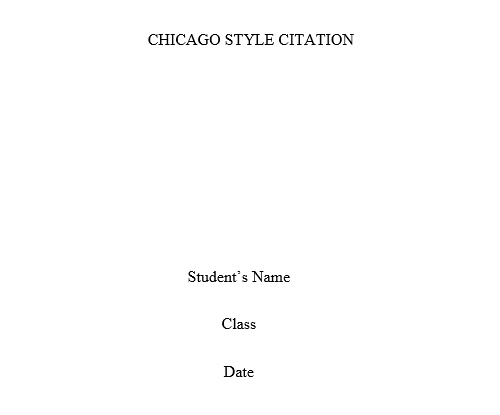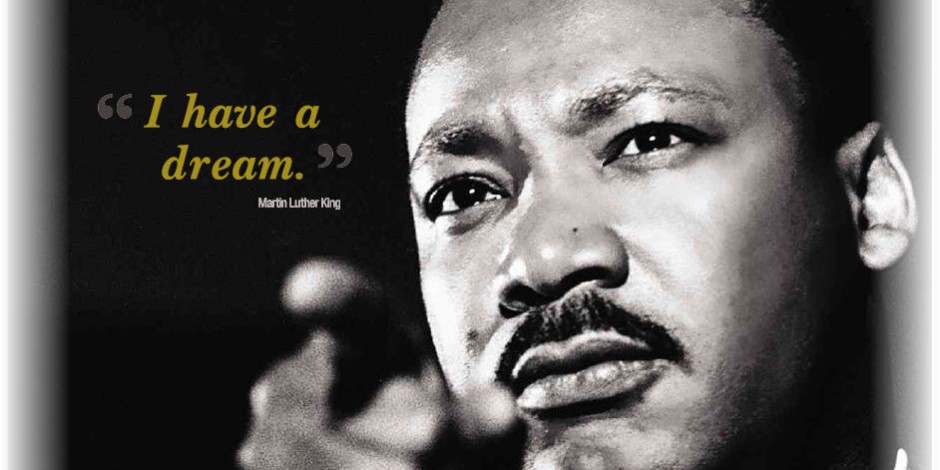This Chicago/Turabian citation guide covers the main aspects of the format. Basically, students require proper guidance on how to cite evidence and avoid various cases of plagiarism. Unfortunately, many websites that provide guides on the Chicago/Turabian writing format include different details because authors do not follow the rules of the official source. Moreover, this writing style differs from other formats because of the note-bibliography citation type. In this case, the Chicago/Turabian format requires the use of footnotes to organize in-text citations and bibliography entries to reference the sources. Therefore, people need to know the rules of the Chicago/Turabian citation to write high-quality papers.
General Aspects of the Chicago/Turabian Style and Citations
Chicago/Turabian style citation is used in some university programs to provide a standard technique for identifying sources in academic writing. For example, students get writing assignments where they need to cover their essay topics and follow Chicago/Turabian formatting rules. Additionally, many tasks may require understanding how to write a personal narrative essay to meet the academic standards. Hence, students use illustrations or evidence in demonstrating the general formats where the Chicago/Turabian manual of style citation is preceded by ‘N,’ while bibliography entries are represented by ‘B’ to follow the writing format. However, not all people know about the key features of the Chicago/Turabian style format and bibliography features. In this case, they need to highlight the main format rules for footnotes and bibliography entries.
Definition and Purpose
The Chicago/Turabian citation format is a referencing style typical in humanities. For example, the primary purpose of the Chicago/Turabian referencing style is to avoid plagiarism by following specific rules. When people use evidence from other studies, they must cite it in their papers, and there are two methods for acknowledging sources used in writing. In particular, Chicago/Turabian citation rules require people to use the author-date format, footnotes, and a bibliography.
Author-Date Format Rules
Chicago/Turabian citation requires writers to use author-date format when acknowledging sources in physical, natural, and social sciences. For instance, in-text citations should have the author-date format. Along these lines, the in-text citation should contain the surname of the author, date of publication, and pagination. Besides, such details should appear inside brackets. In turn, some rules of Chicago/Turabian guidelines dictate the formatting of author-date in-text citations. Firstly, a comma should sperate the year of publication and the pagination. Secondly, one should not put a comma between the surname and year of publication. Finally, a person should use the word “and” for sources with two authors. Thus, Chicago/Turabian provides an option to use parenthetical citations in the form of author-date to acknowledge borrowed information.
Footnote Rules
Chicago/Turabian provides an option for writers to use footnotes for in-text citations. For instance, the writer should use footnotes that correspond to superscripts for in-text citations. In this case, one should place a superscript after the sentence with quoted information. This superscript should appear after the full stop. Basically, the names of authors in the footnote should not have an inverted form for sources that appear for the first time. For example, a footnote should start with the first name of the author. Besides, if it appears a second time, it should begin with the surname. All notes must identify the exact location of the cited information. Hence, one must include the page number in the footnotes. Also, a person must provide a paragraph number for online sources like websites. Thus, Chicago/Turabian citation allows writers with an option to use footnotes.
Bibliography Rules
Chicago/Turabian citation must include a bibliography. As a rule, the bibliography is the last section of an academic paper formatted in this style and lists all cited sources. The listing follows the alphabetical order of the principal author’s last name. In some cases, the bibliography should list sources in chronological order. In this case, the writer should list sources starting with the most recent ones. This case applies to sources written by one author at different times. Besides, the bibliography entry of the source must contain enough details to identify sources. For example, one must include the title of the source and year of publication. The title of the source must be in title case where only conjunctions and subordinate clauses should start with a small letter. Thus, the Chicago/Turabian citation requires a bibliographic page with sufficient details identifying sources quoted.
Footnotes as Chicago/Turabian In-Text Citations
The note-bibliography style is one of the manifestations of Chicago/Turabian among other paper formats in this case of citations. Basically, this technique requires the writer to signal the incorporation of information from other sources by putting a superscript after the punctuation that ends a particular statement, which contains the referenced information. In this case, the Chicago/Turabian format stands out among other referencing techniques where details of a source are not included within the continuous text of an essay. On the other hand, the superscript generates a Chicago/Turabian footnote, which comprises the authors’ names, the title of the source, publication details, and page numbers. However, Chicago/Turabian footnotes provide complete information concerning the source and the specific location of the referenced information. Thus, a sample Chicago/Turabian footnote of the citation entry in this style is illustrated in the example below:
Superscript in the Essay:
For instance, the World War had over two million recorded deaths.1 Hence, this statement demonstrates . . .
Footnote:
1. Johns Locke, Revisiting the Great Wars (New York: Johnson & Sons, 2002), 92.
Multiple Authors and Organization as Authors
The identity and number of the authors provided for a given source slightly modify Chicago/Turabian footnotes as citations to follow the style. For example, the title of an official organized body is substituted as the author of a source where no individual author is provided on the document. In this case, the organization may be the author and publisher. Moreover, three or fewer authors are mentioned by their names, but four or more authors are represented by the name of the first author, followed by “et al.” Basically, this rule concerning authors should maintain consistency across different works. In turn, the lack of either an individual author or organization name for Chicago/Turabian style citation forces the writer to use the title of the work as the primary identifier of a source.
Examples of Footnotes in Chicago/Turabian Citation
An Organization as Author:
40. American Health Association, Moral and Ethical Guidelines for Medical Practitioners (New York: American Health Association, 2019), 302.
Three Authors:
18. Mary Clarks, Fredrick Lugar, and Grace Malcolm, Chicago/Turabian Style Citation (Cambridge: Harvard University Press, 1999), 71.
Four and More Authors:
19. Sanford Price et al., Advancement in Emergency Medicine (London: University of London Press, 2015), 12.
Shortened Footnotes
The complete citation information in the format should not be repeated each time when the same source is referenced. For example, the level of detail in the Chicago/Turabian footnote is reduced to include the authors’ surname, the condensed title of the work, and the page number in subsequent notes. In this case, notes are usually written in a short form to facilitate the tracking of sources without consistent repetition of lengthy notes. Also, short forms may follow the author-only, author-title, or title-only format in Chicago/Turabian style citation. Firstly, author-only format citation condenses a note to the author’s last name and page numbers, but a shortened title is provided to differentiate multiple works of the same author. Then, author-title type maintains the author’s surname, shortened title, and page number for all footnotes. Finally, title-only Chicago/Turabian style citation is used only when there is no known author for a source.
Examples of Short Footnotes in Chicago/Turabian Citation
Author-Only Note:
6. Jacks, 90.
Author-Title Note:
9. Rogers, Chicago/Turabian Style Citation, 120-21.
Title-Only Note:
12. Small Business Ventures, 789.
Chicago/Turabian Style Bibliography
The bibliography page in the Chicago/Turabian style citation is the complementary list of sources used. For instance, the full footnote contains nearly the same information as a bibliography entry with a slight variation in the organization of the specific details and punctuation. Moreover, note-bibliography Chicago/Turabian style citation may appear repetitive. Basically, students need to mention the full footnote only first time when citing evidence. After that, they can use the name of the author with the use page number from the source. However, Chicago/Turabian footnotes and bibliography serve different purposes. Firstly, footnotes show the page number from where authors take evidence. Secondly, bibliography entries serve to show the source itself. In this case, others can read or use sources for their papers. As a result, this difference is evident in the lack of specific locations in the bibliography entries.
Alphabetical Order
Chicago/Turabian entries are arranged in the alphabetical order based on the primary identifier of sources. For instance, if the same individual authors two or more works, the author’s name is eliminated for these sources, and alphabetical order is created based on the first word of the title that should not be an article. Also, the alphabetizing rule holds for sources that do not have authors. After establishing the alphabetical order, people need to place three dashes with no spaces before words with similar authors except for the first source in the alphabetical hierarchy. In this case, students can follow the alphabetical order for works with similar authors manually due to these rules. Hence, the bibliography is a compulsory feature of Chicago/Turabian style citation, and it may only be excluded under the direction of the instructor.
Chicago/Turabian Footnotes and Bibliography Citation Entries
Book:
N:
1. Patrick Powell, Pushing a Man to the Edge: Racial Discrimination, 2nd ed. (Boston: Boston University Press, 2000), 34.
B:
Powell, Patrick. Pushing a Man to the Edge: Racial Discrimination. 2nd ed. Boston: Boston University Press, 2000.
Edited Book:
N:
Naomi White, The Social Problems Surrounding the Civil War, ed. Edward Blake (Colombia: Coleman & Wayne, 2011), 92.
B:
White, Naomi, The Social Problems Surrounding the Civil War. Edited by Edward Blake. Colombia: Coleman & Wayne, 2011.
Chapter in an Edited Book:
N:
Hannah Sanchez, “Following Chicago/Turabian Style Citation,” in School Administration: Policies for the Future, ed. James Raines (Sydney: Springer, 2019), 340.
B:
Sanchez, Hannah. “Following Chicago/Turabian Style Citation.” In School Administration: Policies for the Future, edited by James Raines, 330-50. Sydney: Springer, 2019.
Journal Article:
N:
Jane Thatcher, “Mass Shootings in America,”
Conflict and Security 34, no. 1 (2007): 456, accessed August 19, 2011, http://dx.doi.org/ffff2990-234.
B:
Thatcher, Jane. “Mass Shootings in America.” Conflict and Security 34, no. 1 (2007): 450-70. Accessed August 19, 2011. http://dx.doi.org/ffff2990-234.
Website:
N:
Samuel Cross, “How to Organize Chicago/Turabian Style Citation,” Mills University, last modified October 1, 2014, accessed March 3, 2015, http://www.news.millsuni.edu/990.
B:
Cross, Samuel. “How to Organize Chicago/Turabian Style Citation.” Mills University. Last modified October 1, 2014. Accessed March 3, 2015. http://www.news.millsuni.edu/990.
Conclusion on Chicago/Turabian Citation
In conclusion, Chicago/Turabian style citation rules have been discussed with a focus on the critical aspects of the referencing, and this format includes two options to cite sources. Firstly, writers have the option of using author-date format or footnotes. In author-date format, one must give the surname and date of publication. Besides, the citation should include the page containing quoted information. The footnote format requires writers to use superscripts for in-text citations. Then, Chicago/Turabian citation needs all papers to have a bibliography page that lists all sources in alphabetical or chronological order. Hence, students must know these principles in organizing their papers. In this case, Chicago/Turabian footnotes and bibliography entries are the key features of the format. However, there is much information on Chicago/Turabian style citation rules that can be found on the official website of the format. In turn, the examples of footnotes and bibliography entries provided in this article are based on fictional referencing details and should not be considered as real citations.



